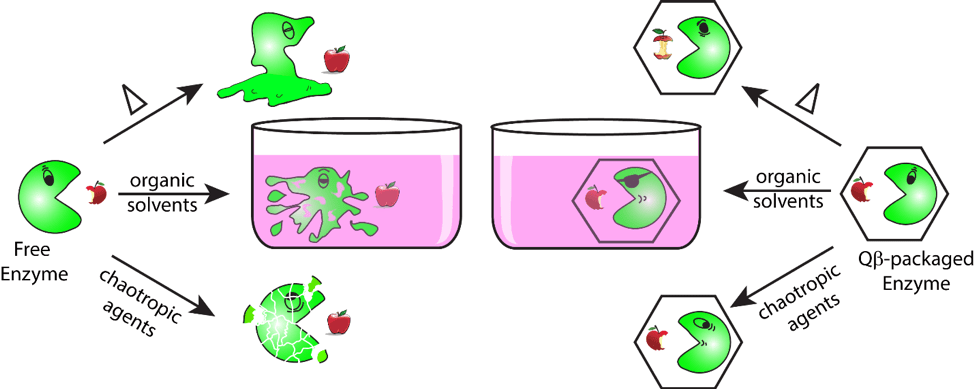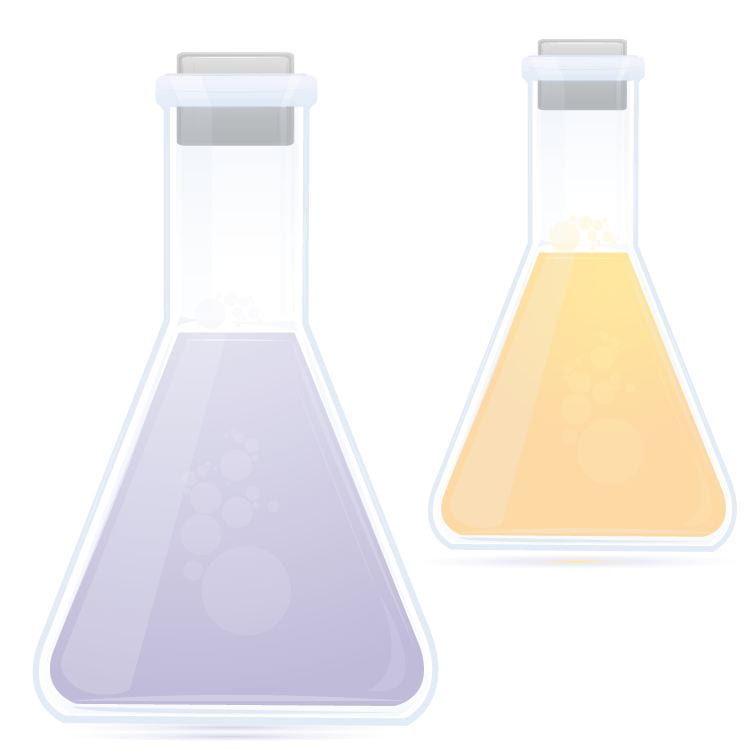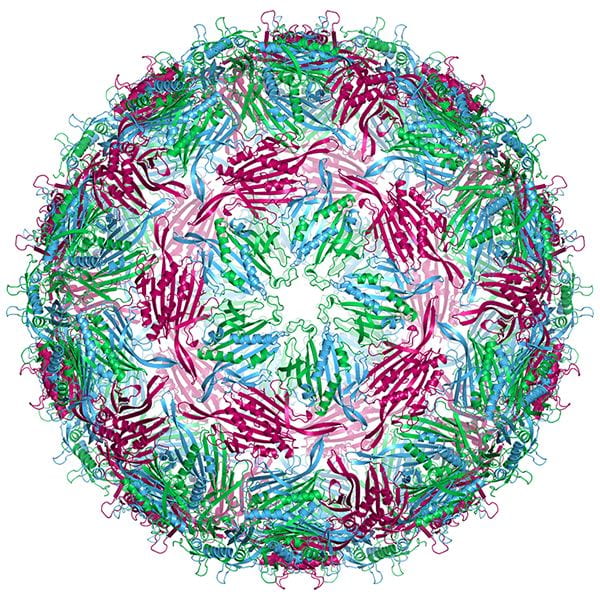virus-like particle “gymnastics”

Virus-like particles (VLPs) are self-assembling, nanoscale structures that can tolerate substantial genetic and chemical modification and possess powerful multivalent display capabilities. VLPs have therefore attracted attention as therapeutic platforms for the delivery of peptide-based motifs for immunology, cell targeting, and drug delivery. Our lab has longstanding interests and expertise in the genetic and chemical modification of the Leviviridae family capsid proteins (Q-beta, PP7, MS2) and other structures as platforms for the presentation of functional biomolecules.
Packaging Functional small molecules

Leviviridae-derived virus-like particles are natural carriers of lots of RNA. We use this RNA as a controllable sponge for intercalating dyes, to which can be attached almost any small-to-medium sized molecule that one wishes to package inside a particle. Exemplified by thiazole orange (TO), this is a highly convenient way to pack a protein nanoparticle with all sorts of things, a capability that we are exploring for a variety of applications.
Packaging Functional Biomolecules

Viruses are among the most elegant of nature’s containers for functional molecules. We have developed robust methods for producing virus-like particles containing functional proteins and nucleic acids. Enzymes packaged in this way are protected from degradation and often exhibit enhanced catalytic activity. Aptamers inside particles can productively synergize with co-located enzymes to give enhanced performance. This is enzymology made easy, at least with enzymes that operate on non-protein substrates.



